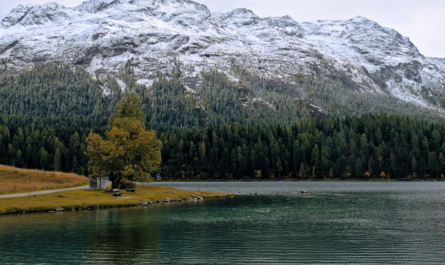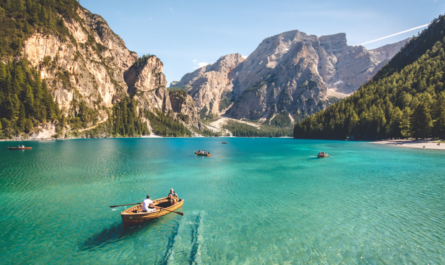Protected areas around Saint Moritz—including the century‑old Swiss National Park, Parc Ela, and the UNESCO Biosfera Engiadina Val Müstair—form an interconnected safety net for some of the Alps’ richest plant communities and most charismatic wildlife. By enforcing strict zoning (from IUCN Category Ia wilderness cores to buffer areas where traditional grazing continues), these parks safeguard stone‑pine forests, glacier‑fed wetlands, and alpine meadows while offering research “living laboratories” that track climate change, rewilding success, and visitor impact. Their combined efforts have enabled the recovery of flagship species such as the Alpine ibex, golden eagle, and bearded vulture, and they maintain gene‑flow corridors vital for shy returnees like the Eurasian lynx. Below, an in‑depth look at how each protected area contributes to Saint Moritz’s botanical and zoological resilience—and why coordinated stewardship remains essential.
1 Landscape Context Around Saint Moritz
Saint Moritz sits in the Upper Engadin, ringed by strictly protected cores and regional nature parks. The Swiss National Park (170 km²) lies 20 km northeast, Parc Ela spans 600 km² west of the resort, and the UNESCO biosphere reserve stitches the National Park to Val Müstair, creating a cross‑border ecological mosaicWikipedia. Together these zones cover elevational bands from 1,400 to over 3,000 m, preserving gradients essential for species shifting upslope under warming climates.
2 Swiss National Park: The Alpine “Strict Nature Reserve”
Established in 1914, the Swiss National Park is Europe’s oldest high‑mountain reserve and remains the only Alpine park classified IUCN Category Ia—meaning human intrusion is limited to marked trails for scientific study and environmental education onlyIUCNparks.swiss. Such rigor has produced a wildlife refuge where 300 resident ibex roam undisturbed scree slopes and ptarmigan thrive above the treeline, feeding on buds and sheltering in snow hollows. Long‑term monitoring has also documented vegetation succession—from pioneer dwarf‑shrub mats to mature larch‑stone‑pine stands—offering baseline data for Alpine ecology researchEnvironment & Society Portal. The park’s Green List status (awarded 2021) recognizes its exemplary governance and biodiversity outcomesIUCNHouse of Switzerland.
Key Species Recoveries
- Alpine Ibex – Reintroduced at the start of the 20th century after near‑extinction, the Engadin herd now contributes genetic stock to transalpine projects comparing Swiss and Italian populations.
- Golden Eagle & Bearded Vulture – Both raptors breed within the reserve, benefiting from carrion and marmot prey undisturbed by hunting or off‑trail skiingIUCN.
3 Parc Ela: Buffering Biodiversity With People in Place
Officially labeled a Regional Nature Park in 2012, Parc Ela embraces villages, pastureland, and cultural landscapes while pursuing conservation through sustainable land use. Traditional Alpine grazing keeps meadows open for orchids, gentians, and pollinators, preventing scrub encroachment that can follow total abandonment. Interpretive trails teach visitors how Romansh agro‑pastoral systems still coexist with Natura 2000 species like the black grouse.
4 UNESCO Biosfera Engiadina Val Müstair: Corridor and Climate‑Lab
Linked administratively to the Swiss National Park, this 37,000‑ha reserve ranges from conifer forest to nival scree and hosts only 1,600 inhabitants, allowing large carnivores space to roam. Lynx re‑expansion across Switzerland depends on such low‑disturbance corridors, and biosphere scientists track plant‑pollinator shifts as warmth pushes lower‑altitude species uphill. The Biosfera authority also pilots renewable‑energy microgrids and eco‑tourism quotas, integrating climate mitigation with biodiversity goals.
5 Flora Highlights Safeguarded by the Park Network
- Swiss Stone Pine (Pinus cembra) – Known as the “Queen of the Alps,” this slow‑growing conifer crowns the timberline and relies on the spotted nutcracker for seed dispersal; strict reserves prevent logging that once fragmented its range.
- Alpine Meadow Carpets – Gentiana, Soldanella, and Edelweiss flourish where ski grooming and fertilizer are absent, providing nectar to rare Alpine butterflies and bumblebees.
- Larch–Stone‑Pine Mixed Forests – Protect hillslope stability above Saint Moritz, buffering avalanches and storing carbon, roles highlighted in recent park climate‑adaptation studies.
6 Faunal Mosaic Beyond the Flagships
While ibex and eagles capture tourist cameras, lesser‑known creatures thrive too:
- White‑Tailed Ptarmigan – Shifts diet seasonally from seeds to alpine blossoms, an adaptation monitored as snow lines retreat.
- Eurasian Lynx – Reintroduced in the 1970s, now 17,000–18,000 strong in Europe; Engadin parks offer core territories where public acceptance remains high thanks to education programs linking healthy ungulate control to forest regeneration.
- Beetles and Bryophytes – Dead‑wood retention inside strict zones fosters saproxylic beetles and mosses that indicate old‑growth conditions largely vanished elsewhere in the Alps.
7 Research and Monitoring: Parks as Open‑Air Laboratories
Because extractive uses are absent, the Swiss National Park has produced a century‑long data set on untouched Alpine dynamics, setting global benchmarks for natural erosion rates, predator–prey cycles, and climate‑response trajectories. Parc Ela and the Biosfera complement this by testing mixed‑use models—how much tourism or grazing a landscape can absorb without biodiversity loss. Technology pilots, such as IUCN‑backed drone mapping for ungulate counts, debuted in the National Park before scaling to regional parks.
8 Visitor Management and Eco‑Tourism Benefits
Strict trail networks (closed from dusk to dawn in breeding seasons), interpretive visitor centers at Zernez, and mountain hut certification schemes channel recreation away from sensitive zones while capturing revenue for conservation staffing. In Parc Ela, profits from heritage‑trail tickets fund meadow orchid safeguard projects, illustrating how eco‑tourism can underwrite botanical guardianship rather than undermine it.
9 Challenges Ahead
Climate warming pushes goats and ibex toward nocturnal behavior, complicating monitoring and potentially exposing them to new predators. Glacier retreat threatens moisture‑dependent plants, while rising guest numbers test carrying‑capacity thresholds during peak summer weeks. Coordinated park governance and real‑time visitor‑flow data will be critical to balance access with refuge.
Community Engagement and Environmental Education
The Swiss National Park’s visitor centre in Zernez runs year‑round workshops and guided walks that teach guests how undisturbed ecosystems function, turning tourists into ambassadors for low‑impact recreation. Parc Ela extends that outreach by linking school classes with farmers who demonstrate traditional meadow‑cutting techniques that keep orchid habitats open.
Rewilding Initiatives and Species Reintroductions
Across the broader Alps, coordinated projects have brought back bearded vultures, lynx, wolves, and even experimental herds of wild horses; Engadin parks supply know‑how and, in the case of ibex, surplus animals for other regions’ rewilding drives. These programmes diversify trophic webs and help restore natural grazing and scavenging dynamics.
Carbon Sequestration and Climate‑Mitigation Strategies
Mixed larch–stone‑pine forests inside strict‑protection cores store up to 166 tonnes of carbon per hectare, buffering both climate change and avalanche risk. Long‑term tree‑ring studies show that though stone pines grow slowly, they lock away carbon for centuries—evidence parks use to argue for extended old‑growth reserves.
Citizen Science and Participatory Monitoring
Engadin authorities increasingly recruit hikers and local residents to log wildlife sightings and plant phenology through mobile apps, augmenting professional transect data and fostering stewardship. Such participatory projects expand spatial coverage, detect species shifts sooner, and deepen public investment in conservation outcomes.
Transboundary and International Cooperation Frameworks
Swiss parks collaborate with EU counterparts on knowledge exchange missions, biodiversity corridors, and joint funding bids—demonstrating that nature reserves can serve as diplomatic bridges even when other policy areas stall. These alliances amplify conservation impact, pooling science expertise and leveraging cohesive lobbying power for stronger Alpine‑wide protection policies.
Conclusion
National parks and regional biospheres surrounding Saint Moritz operate as interlocking gears: the Swiss National Park locks out disturbance to let natural processes unfold; Parc Ela integrates sustainable human use; and the Biosfera Engiadina Val Müstair connects corridors, research, and climate adaptation. Together they preserve an alpine ark of stone‑pine forests, flower‑rich meadows, and emblematic fauna—ibex sure‑footing across scree, eagles soaring on thermals, and lynx padding through twilight larch stands. In doing so, they protect not only ecological integrity but also the scenic and cultural backdrop that makes Saint Moritz’s glamour possible. Continued vigilance—through strict zoning, cross‑park cooperation, and climate‑smart management—will ensure this high‑mountain biodiversity thrives long after the last snowfall of any ski season melts into Engadin streams.Preserving Engadin nature ultimately depends on turning visitors into stewards, not spectators. When schoolchildren dissect owl pellets at the Zernez visitor center or adults learn traditional meadow‑scything on Parc Ela farmsteads, they experience firsthand how wildlife and heritage intertwine. Those tactile lessons lodge in memory, shaping future choices about recreation, consumption, and even voting—choices that determine whether tomorrow’s Alps remain as alive as today’s.
Equally transformative is the parks’ commitment to rewilding and genetic resilience. The once‑imperiled Alpine ibex now thrives on crags above the Inn River because century‑old protection evolved into modern DNA monitoring and careful translocations. Similar science‑backed strategies guide the bearded vulture’s comeback: young birds released from breeding centers now circle the Bernina massif, knitting scavenger functions back into ecosystems in ways human clean‑up crews never could.
The Engadin forests offer another dimension of protection—climate security. Mature larch and stone‑pine stands store tremendous carbon and stabilize slopes that would otherwise slide into reservoirs and roads each spring. Preserving these slow‑growing giants is therefore not land “locked away,” but land actively working as a carbon vault and avalanche buffer for local communities and visiting skiers alike.
Citizen science knits residents and tourists into the conservation fabric. Mobile apps allow hikers to log ibex sightings or note the first bloom of gentian, creating thousands of data points rangers alone could never gather. Each upload is a tiny vote for stewardship, transforming casual walkers into co‑authors of the region’s ecological ledger.
Still, new threats loom on the horizon. Soil ecologists warn that warming may reorder underground microbial networks, erasing current carbon‑storage gains. Climate models predict a one‑third reduction in Alpine snow days by century’s end, tempting ski infrastructure to creep higher into fragile terrain. The parks will need agility—tighter seasonal trail quotas, expanded no‑go zones during breeding periods, and robust advocacy for global emissions cuts—to stay ahead of these shifts.
Transboundary cooperation amplifies that agility. Val Müstair’s UNESCO biosphere reserve collaborates with Italian scientists on lynx corridor mapping, proving political borders needn’t become ecological walls. Joint drone surveys and shared data protocols with Austrian and French reserves strengthen the entire Alpine arc, pooling knowledge and lobbying power for continent‑wide protections.
Economically, sustainable tourism shows that luxury and conservation can share the same lift pass. Surveys reveal that guests who understand how their spending funds trail maintenance and meadow restoration stay longer, spend more on local produce, and return with friends—proof that ecological integrity is not a cost center but a brand asset for Saint Moritz.
In the end, the parks surrounding this glamorous resort function like a precision Swiss watch: strict wilderness cores, mixed‑use buffers, citizen data loops, and climate‑smart research all mesh to keep biodiversity ticking. If these gears continue to turn in harmony—helped by curious visitors, diligent scientists, and forward‑thinking policy makers—future generations will still glimpse ibex silhouettes at dawn, inhale stone‑pine resin on summer trails, and ski beneath golden‑eagle thermals, living proof that deliberate guardianship can outpace even the swiftest meltwater stream.



